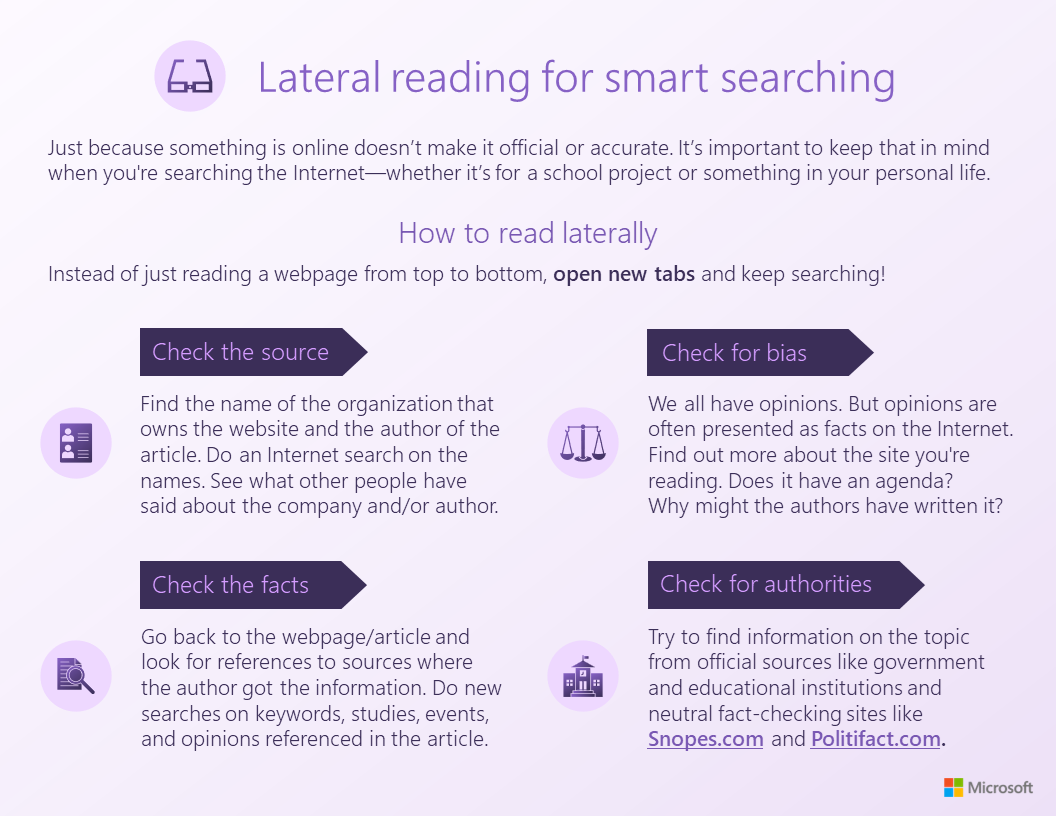Learner empowerment and lateral reading
Search Coach improves learners' critical thinking when it comes to research and finding source information. These skills can be further supercharged by a simple concept: lateral reading.
When teaching information literacy, it’s no longer sufficient to rely on a website’s domain, About page, or aesthetics to judge its credibility. These features can be deceptive. Research shows that both students and adults often misjudge a site’s trustworthiness based on looks alone—a holdover from the early web. Today, it’s tough to tell if a site is truly neutral or a facade for specific agendas.
Lateral reading, which involves comparing multiple sources to verify information, is a crucial skill for navigating the digital age. This method marks a significant shift from traditional analysis and is vital for both learners and educators to master.
For an introduction to the concept of lateral reading, we encourage you to explore this video (runtime 3 minutes, 33 seconds).
In a Stanford History Education Group study on lateral reading, researchers Sam Wineburg and Sarah McGrew state that "When reading laterally, one leaves a website and opens new tabs along a horizontal axis in order to use the resources of the Internet to learn more about a site and its claims." Learners discover what other sources have to say about certain articles by opening a new tab. They practice lateral reading by finding important words such as names, organizations, and events on one site and exploring them in new searches.
By teaching strategies like lateral reading, Search Coach empowers learners to build critical thinking skills while using the web as a research tool, preparing them to face future challenges as successful digital citizens.

Lateral reading for smart searching accessible PDF
Learn more about lateral reading
- Sort Fact from Fiction Online with Lateral Reading
- University of Louisville lateral reading video and PDF
- Reading Less and Learning More, a lateral reading study
- From Digital Native to Digital Expert - Harvard Graduate School of Education